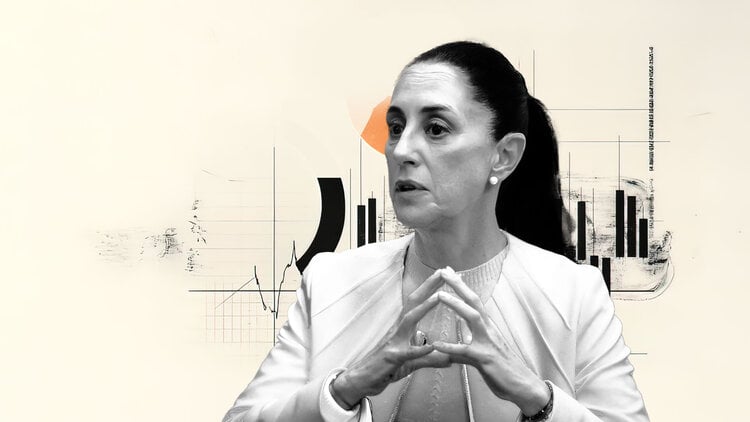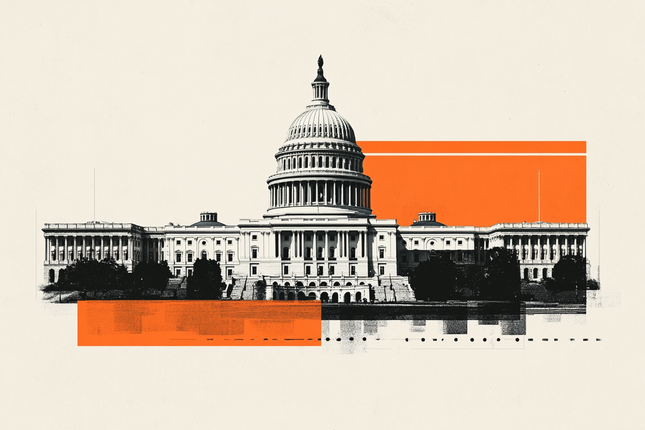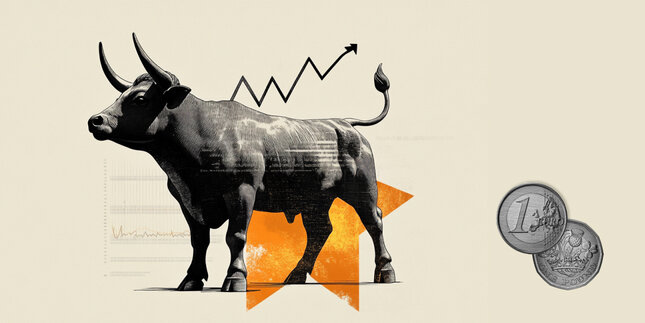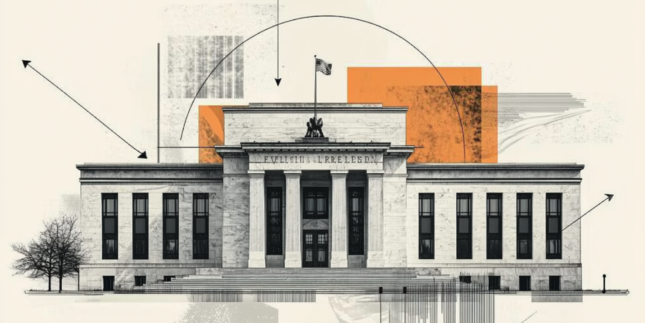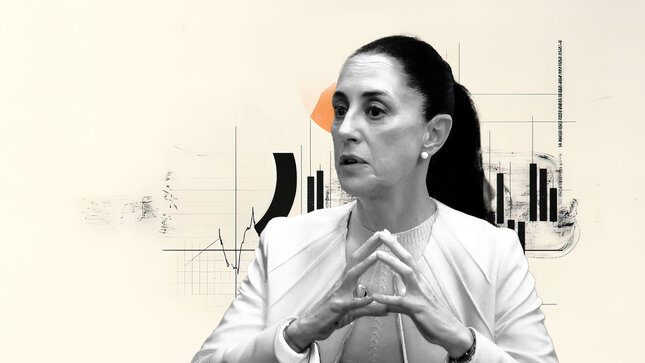Mexican Peso breaks support in anticipation of US-China trade talks
- The Mexican Peso dismisses weak Consumer Confidence as traders remain focused on key sentiment drivers.
- US-China trade talks this weekend remain key for the Mexican Peso and EM currencies.
- USD/MXN reacts to diverging monetary policies ahead of Banxico decision.
The Mexican Peso (MXN) is extending gains against the US Dollar (USD) on Friday, as markets digest a notable decline in Mexico's consumer confidence, a series of Federal Reserve speeches, and look ahead to the upcoming US-China trade discussions in Switzerland.
At the time of writing, USD/MXN is trading below 19.500, down 024%, with further moves likely driven by sentiment shifts around Fed policy signals, domestic economic data, and global trade developments.
Mexico’s Consumer Confidence falls in April, signalling softer domestic outlook
Mexico’s National Institute of Statistics and Geography (INEGI) reported a steep drop in April Consumer Confidence, with the headline index plunging to 45.5 from 64.1 in March.
The seasonally adjusted figure also declined to 45.3, down from 46.0. The index reflects household sentiment on finances, job prospects, and the broader economy, key drivers of domestic demand.
Despite the sharp decline, USD/MXN showed little reaction. Markets have largely priced in the weaker domestic outlook, especially amid growing expectations for a 25-50 basis-point Banxico rate cut next week (15 May).
Additionally, investor focus remains on external risk sentiment, including global rate differentials and ongoing US-Mexico trade tensions. With these broader macro drivers dominating direction, soft consumer confidence is viewed as confirmation rather than a new catalyst.
Fed-Speak in focus as markets weigh policy divergence
Another major driver for USD/MXN is the interest rate differential and policy divergence between Banxico and the Federal Reserve.
With central banks globally still focused on curbing inflation, markets are closely watching a series of speeches today from Fed officials after their decision to leave US interest rates stable on Wednesday.
On Friday, several Federal Reserve officials provided insights into the current economic landscape and monetary policy direction.
Governor Adriana Kugler highlighted the strength of the U.S. labor market, suggesting it is approaching the Fed's maximum employment goal, which allows for a patient approach in achieving the 2% inflation target. Governor Michael Barr expressed concerns over recent trade tariffs, warning they could lead to higher inflation and unemployment, posing a complex challenge for policymakers.
New York Fed President John Williams reaffirmed the central bank's commitment to price stability, noting that while inflation expectations remain anchored, vigilance is necessary amid economic uncertainties.
Additional remarks are anticipated later today from Governors Lisa Cook and Christopher Waller, as well as Chicago Fed President Austan Goolsbee, who is scheduled to speak at the "Fed Listens: Perspectives from the Midwest" event. These discussions are expected to provide further clarity on the Federal Reserve's policy outlook and its response to evolving economic conditions.
Mexican Peso daily digest: USD/MXN factors to watch
- Mexico’s April inflation report, released on Thursday, showed price growth accelerating to 3.93% YoY, above the 3.90% forecast. Core inflation rose 0.49% MoM, up from 0.43% in March and exceeding expectations of 0.47%.
- The upside surprise in both headline and core figures signals persistent underlying price pressures.
- Still, as inflation remains within the central bank’s target range of between 2% and 4%, markets widely expect the Banxico to cut rates next week.
- Over the weekend, Treasury Secretary Scott Bessent and Jamieson Greer will meet with Chinese officials in Switzerland to discuss trade, with tensions between the world’s largest economies remaining as a key driver for risk sentiment
- As an Emerging Market (EM) currency, the peso is highly sensitive to global risk sentiment and trade dynamics. With about 80% of Mexico’s exports going to the US and China serving as a major supplier of intermediate goods, the peso is particularly vulnerable to shifts in trade flows and investor appetite for risk.
- Recent US tariff announcements on aluminium, steel, and autos – as well as the potential for additional levies outside the USMCA – have raised concerns about Mexico’s growth outlook and added to economic uncertainty.
USD/MXN heads toward the April low
USD/MXN remains under pressure, trading just above key support at 19.50, with the broader trend still pointing lower.
The pair is struggling to reclaim the 10-day Simple Moving Average (SMA) at 19.59, which continues to act as dynamic resistance.
Price action remains capped by a descending trendline from the April decline, reinforcing bearish momentum.
For bulls to gain traction, a move above the 10-day SMA and a break above the 19.60 psychological level may provide the opportunity for USD/MXN to continue toward the May high at around 19.78.
Meanwhile, a move below 19.50 and a daily close below the April low of 19.47 could expose further downside toward the 38.2% retracement level of the April 2024 - February 2025 move at 19.371.
The Relative Strength Index (RSI) at 37.49 suggests bearish momentum without being oversold, indicating that there’s still room for sellers to stay in control unless a fundamental catalyst triggers a reversal.
USD/MXN daily chart
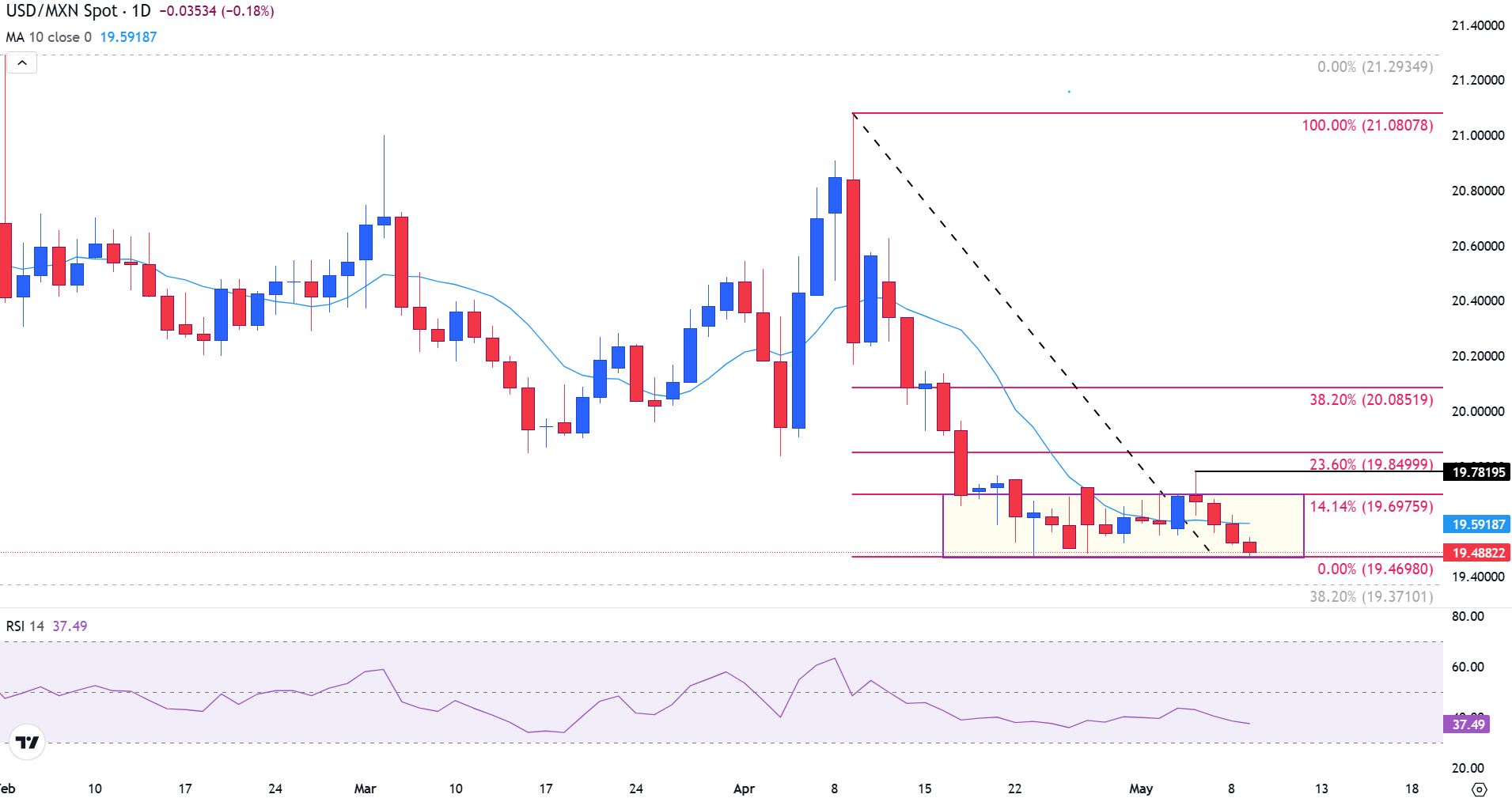
Central banks FAQs
Central Banks have a key mandate which is making sure that there is price stability in a country or region. Economies are constantly facing inflation or deflation when prices for certain goods and services are fluctuating. Constant rising prices for the same goods means inflation, constant lowered prices for the same goods means deflation. It is the task of the central bank to keep the demand in line by tweaking its policy rate. For the biggest central banks like the US Federal Reserve (Fed), the European Central Bank (ECB) or the Bank of England (BoE), the mandate is to keep inflation close to 2%.
A central bank has one important tool at its disposal to get inflation higher or lower, and that is by tweaking its benchmark policy rate, commonly known as interest rate. On pre-communicated moments, the central bank will issue a statement with its policy rate and provide additional reasoning on why it is either remaining or changing (cutting or hiking) it. Local banks will adjust their savings and lending rates accordingly, which in turn will make it either harder or easier for people to earn on their savings or for companies to take out loans and make investments in their businesses. When the central bank hikes interest rates substantially, this is called monetary tightening. When it is cutting its benchmark rate, it is called monetary easing.
A central bank is often politically independent. Members of the central bank policy board are passing through a series of panels and hearings before being appointed to a policy board seat. Each member in that board often has a certain conviction on how the central bank should control inflation and the subsequent monetary policy. Members that want a very loose monetary policy, with low rates and cheap lending, to boost the economy substantially while being content to see inflation slightly above 2%, are called ‘doves’. Members that rather want to see higher rates to reward savings and want to keep a lit on inflation at all time are called ‘hawks’ and will not rest until inflation is at or just below 2%.
Normally, there is a chairman or president who leads each meeting, needs to create a consensus between the hawks or doves and has his or her final say when it would come down to a vote split to avoid a 50-50 tie on whether the current policy should be adjusted. The chairman will deliver speeches which often can be followed live, where the current monetary stance and outlook is being communicated. A central bank will try to push forward its monetary policy without triggering violent swings in rates, equities, or its currency. All members of the central bank will channel their stance toward the markets in advance of a policy meeting event. A few days before a policy meeting takes place until the new policy has been communicated, members are forbidden to talk publicly. This is called the blackout period.
Forex News
Keep up with the financial markets, know what's happening and what is affecting the markets with our latest market updates. Analyze market movers, trends and build your trading strategies accordingly.
